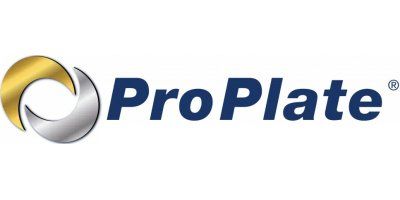

- Home
- Companies
- ProPlate, operated by Professional ...
- Services
- Silver Plating Services
Silver Plating Services
ProPlate’s dedicated new product development team supports new medical device projects from concept through commericialization through our proven process roadmap. ProPlate® has a library of solutions for a wide range of parts and industries. We are always pleased to take on new challenging projects and expand our Silver Plating Services.
SILVER
…plating is best used for applications in electronics and engineering where suitable solderable surfaces and good corrosion resistance are required; for high electrical and thermal conductivity in electrical contacts, thermo-compression bonding, sound reproduction applications, electrical applications that require spectral reflectivity, and other types of electronic applications. As it is not a rare, naturally occurring metal, silver oxidizes quickly, but out of all the metals, it is the one that is the most electrically and thermally conductive.
ProPlate® regularly silver plates components for the medical & dental industries, energy & technology, telecommunications, semiconductors & electronics, oil & gas, and government & aerospace industries.
For your Silver Plating requirements, ProPlate® has capabilities for silver electroplating both small and large parts in various sized barrels and racks, along with custom and prototype metal finishing.
ProPlate® collaborates with value driven companies around the world to provide innovative engineered metallization solutions and to improve people’s lives.
Specifications
MIL-QQ-S-365, Silver Plating, ASTM B700, Silver Plating, AMS 2412, AMS 2410, AMS 2413
Specification: Mil-QQ-S-365 Silver Plating, Electrodeposited
- Type I – Matte
- Type II – Semi-Bright
- Type III – Bright
Plating Thickness
- 0.0003 inch for articles such as terminals which are to be soldered
- 0.0005 inch for increasing the electrical conductivity of basis metals or corrosion protection of nonferrous basis metals.
- 0.0050 inch to 0.0100 inch for electrical contacts, depending on pressure, friction and electrical load
- 0.0005 inch for increasing the electrical conductivity of basis metals
Plating Grades
- With supplementary tarnish-resistant treatment.
- Without supplementary tarnish-resistant treatment.
Tarnish Resistance
To increase the tarnish resistance of the Silver plating, supplementary coatings such as a painting or powder coating can be recommended depending on subsequent finishing steps and solderability.
Corrosion Protection
A Nickel undercoat with Silver plating can be used for applications where corrosion protection is important.
Under-plate Recommendations
Steel, zinc and zinc-based alloys on which silver electroplating is used should have a coating of nickel over copper under the silver. Nickel undercoats should be applied for silver plating on copper and copper alloys. When a nickel undercoat is not used on copper and copper alloy materials or when a copper undercoat is used on other materials, then the silver plating service should not be used for continuous service at a temperature in excess of 300 degrees Fahrenheit. The adhesions of the silver plating can be adversely affected due to a weak copper and silver inter-metallic layer.
